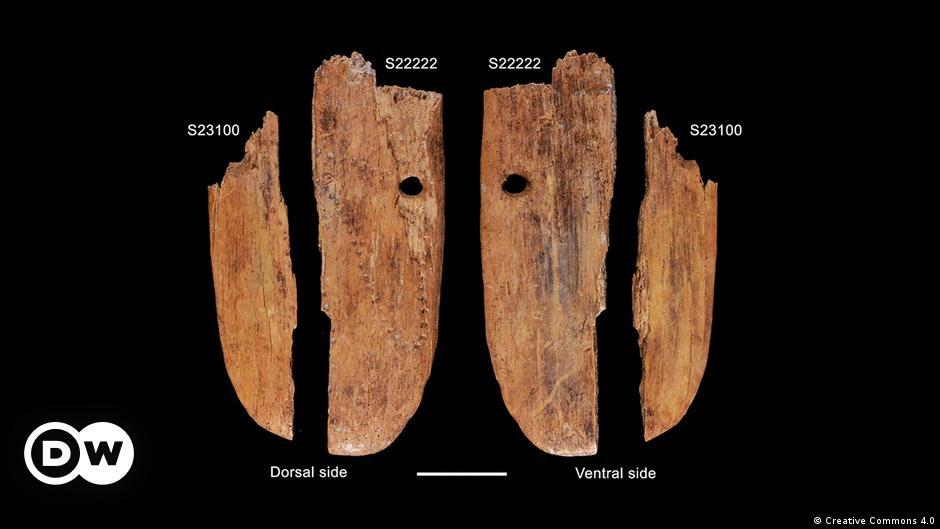A mammoth ivory pendant is the oldest human-decorated jewelery in Eurasia
Shortly after their arrival in Central Europe, Homo sapiens displayed advanced manual skill in creating a 3.7mm thick ivory plate and decorating it with perforations. This is confirmed by research led by the University of Bologna (Italy), which has analyzed the 20 remains of animal bones discovered in the Stajnia cave (Poland) in 2010.
Among them are a pendant, fashioned from a mammoth tusk, and an awl. The samples were dated by radiocarbon to estimate their age at about 41,500 years.
“This study is important because, for the first time, a decorated piece from 41,500 years ago has been found in Poland, a region that, in recent decades, has been ignored in large-scale scenarios about the dispersals of Homo sapiens in Europe”, Sahra Talamo, main author of the study published in the journal Scientific Reports, told SINC.
The identification of the raw material of the Stajnia pendant was carried out by evaluating the broken edges and the exfoliated surface of the object
The application of a series of state-of-the-art methods to determine the exact age of these jewels has allowed us to determine the wide behavioral adaptability of the primitive groups that visited the cave, in highly seasonal environments north of the Carpathians. The cave was a hunting ground used for short-term occupation.
According to scientists, these objects are the first known evidence that humans decorated jewelry in Eurasia and of the appearance of this symbolic behavior in human evolution.

“The result of our study questions the monocentric model of diffusion of artistic innovations in the Aurignacian. Most likely, these artistic manifestations were common within these first groups. Future research in central-eastern Europe will reveal new ways of developing personal ornaments”, argues the researcher.
The identification of the raw material of the Stajnia pendant was carried out by evaluating the broken edges and the exfoliated surface of the object around one of the perforations in which the internal structure of the organic matter was exposed. The collagen was extracted in the Department of Human Evolution of the Max Planck Institute for Evolutionary Anthropology in Leipzig (Germany).
Aerial view of the Stajnia cave. /© Marcin Żarski
Its symbology is an unresolved question
The mammoth tusk consists of a series of cones that are made up of stacked plates of dentin that, on macroscopic examination, appear as white, homogeneous fibrous bands. the milk.
The decoration of the pendant, made with this material, included patterns of more than 50 perforation marks in an irregular looping curve, and two full holes. The authors suggest that the pattern of indentations, similar to that of later jewelry found in Europe, could represent hunting beads (a mathematical counting system) or lunar notations that correspond to the monthly cycle of the Moon or the Sun.
It is decorated with a perforation pattern that creates an irregular loop-shaped curve. This curvature of the Stajnia pendant could indicate a lunar analemma
“It is decorated with a perforation pattern that creates an irregular loop-shaped curve. This curvature of the Stajnia pendant could indicate a lunar analemma – a curved figure of eight – but its symbology remains an open question. It is fascinating that similar decorations have appeared independently throughout Europe. So far, what we can interpret is that the two holes were made to hang it from the neck”, indicates Talamo.
Most of the iconic ornaments found so far were taken from older excavations, but with less information on the formation of the site and post-deposition alterations. Therefore, its chronological attribution is based solely on the stratigraphic context and not on direct dating.
“For example, the objects discovered in the Swabian Alb (Germany) and others in France could be older or younger, we cannot determine. Only with precise radiocarbon dates could we reveal the territorial diffusion of these artistic manifestations”, he concludes.
Reference:
Sahra Talamo et al. “A 41,500 year-old decorated ivory pendant from Stajnia Cave (Poland)”. Scientific Reports









1589